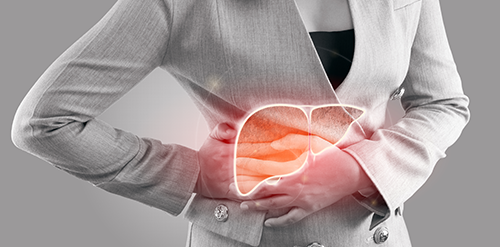Diarrheal diseases kill one out of every nine children worldwide, making diarrhea the second leading cause of death in children under the age of five. Dehydration is the most serious threat posed by diarrhea. Water and electrolytes such as sodium, chloride, potassium, and bicarbonate are lost during a diarrhea episode through liquid stools, vomit, sweat, urine, and breathing. When these losses are not replaced, a person suffering from diarrhea becomes dehydrated. Furthermore, diarrhea is a major cause of malnutrition, making the individual more vulnerable to future recurrence of diarrheal and other diseases.
Diarrhea is defined as the passage of three or more loose or liquid stools per day, or more frequently than the individual's normal frequency. It is typically a sign of a gastrointestinal infection caused by a variety of bacterial, viral, and parasitic organisms. The infection spreads from person to person as a result of poor hygiene or through contaminated food or drinking water.
Diarrhea is classified into three clinical types, each with its own set of treatments:
- Acute watery diarrhea that can last for hours or days and can include cholera.
- Dysentery is a term used to describe acute bloody diarrhea.
- Persistent diarrhea that lasts 14 days or longer.
Historically, severe dehydration and fluid loss were the leading causes of death in children suffering from diarrhea. Other causes, such as septic bacterial infections, are now expected to account for a growing proportion of all diarrhea-related deaths. Exclusive breastfeeding is protective and helps to prevent diarrhea in young children. Breastfeeding also helps to alleviate the severity of diarrhea.
The following are important diarrhea prevention measures:
- access to clean drinking water
- utilisation better sanitation
- Soap for handwashing
- Breastfeeding should be the only source of nutrition for the first six months of life.
- Personal and food hygiene should be maintained at all times.
- Health education on the spread of infections
- rotavirus immunization
The following are important diarrhea treatment measures:
- Oral rehydration salts (ORS) solution: ORS, especially the low osmolarity formula, be a life-saving commodity in the treatment of diarrhea in children.
- Zinc supplements reduce the duration of a diarrhea episode by 25% and are linked to a 30% reduction in stool volume.
- Nutrient-rich foods: The vicious circle of malnutrition and diarrhea can be broken by continuing to give nutrient-rich foods.
- A general rule is not to use over-the-counter medications for diarrhea with fever or stool in the blood.
- Further, if diarrhea is caused by an infection or parasite, there is a need to see a healthcare provider for treatment.
- In the case of severe dehydration or shock, rehydration may necessitate hospitalization.
Research also suggests therapeutic usage of potent herbs can play a vital role in the effective management of diarrhea. As per Ayurveda and modern science, several herbs possess the potential to cure diarrhoeal problems. these herbs are:
Kutaj (Holarrhena antidysenterica): One of the important herbs for diarrhea and dysentery, helpful in killing enteropathogenic bacteria.
Ark pudina (Mentha spicata) & Shunthi (Zingiber officinale): Both medicinal herbs play vital roles in reducing increased gastric motility.
Dadim (Punica granatum) & Amra majja (Mangifera indica): supplements essential phytonutrients that are important in improving water and electrolyte absorption.
Bael (Aegle marmelos): Bael is very effective for the treatment of diarrhea which is not accompanied by fever. The unripe or half-ripe fruit is eaten for best results.
Dill (Anethum sowa): The oil obtained from the dill is used for the treatment of diarrhea. Dill oil is so mild that it is also an ingredient used in medicines for treating baby colic.
Fenugreek (Trigonella foenum graecum): Fenugreek seeds are useful in the treatment of digestive problems including diarrhea.
Babul (Acacia arabica): The babul tree is very useful in preventing diarrhea. Each part of the babul tree is useful. Its leaves can be taken as a mixed dose with black cumin seeds, its bark can be taken as an infusion with water and even its gum can be taken as a syrup.
Available research suggests that herbal medicines can help in managing diarrhoeal diseases. To extend the benefits, Aimil Pharmaceuticals (India) Limited has come up with Amydio forte which combines all the above-mentioned herbs along with other gastro-protective herbs of their best quality.















